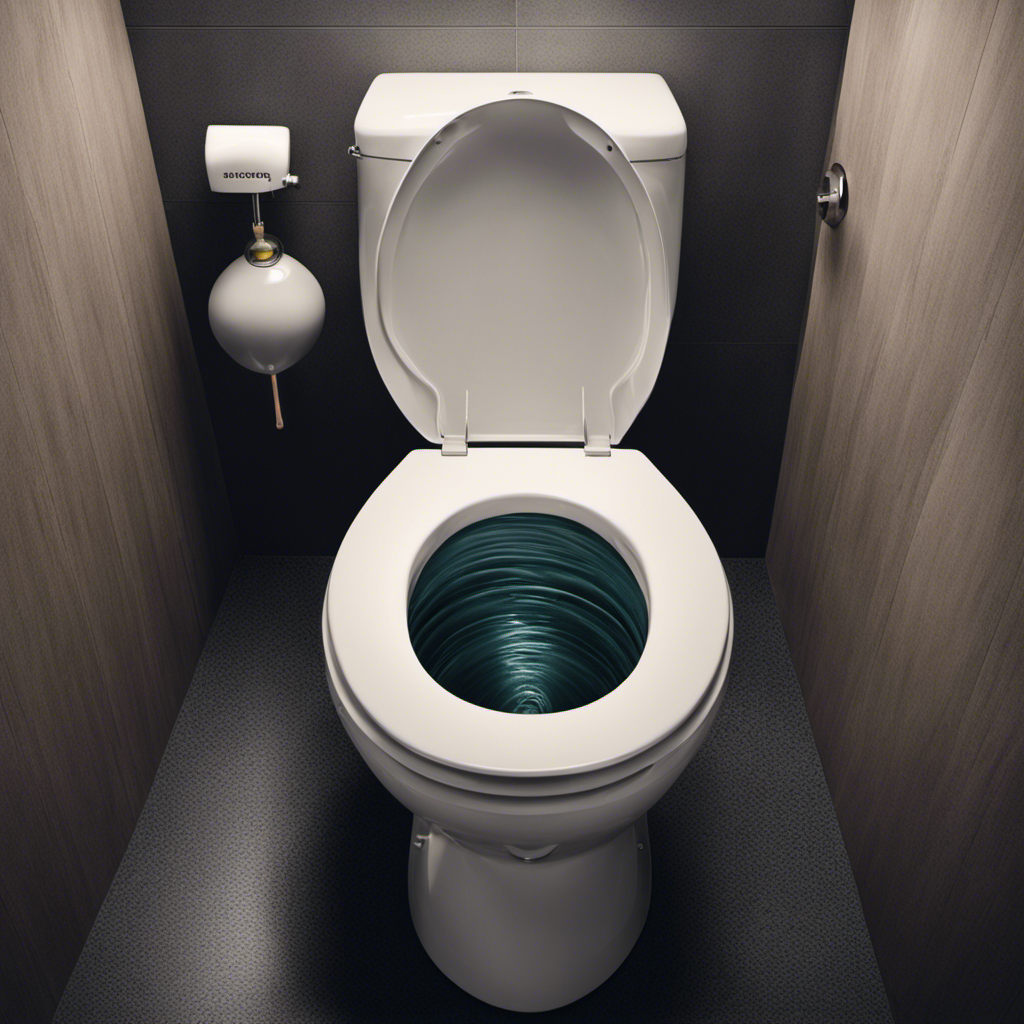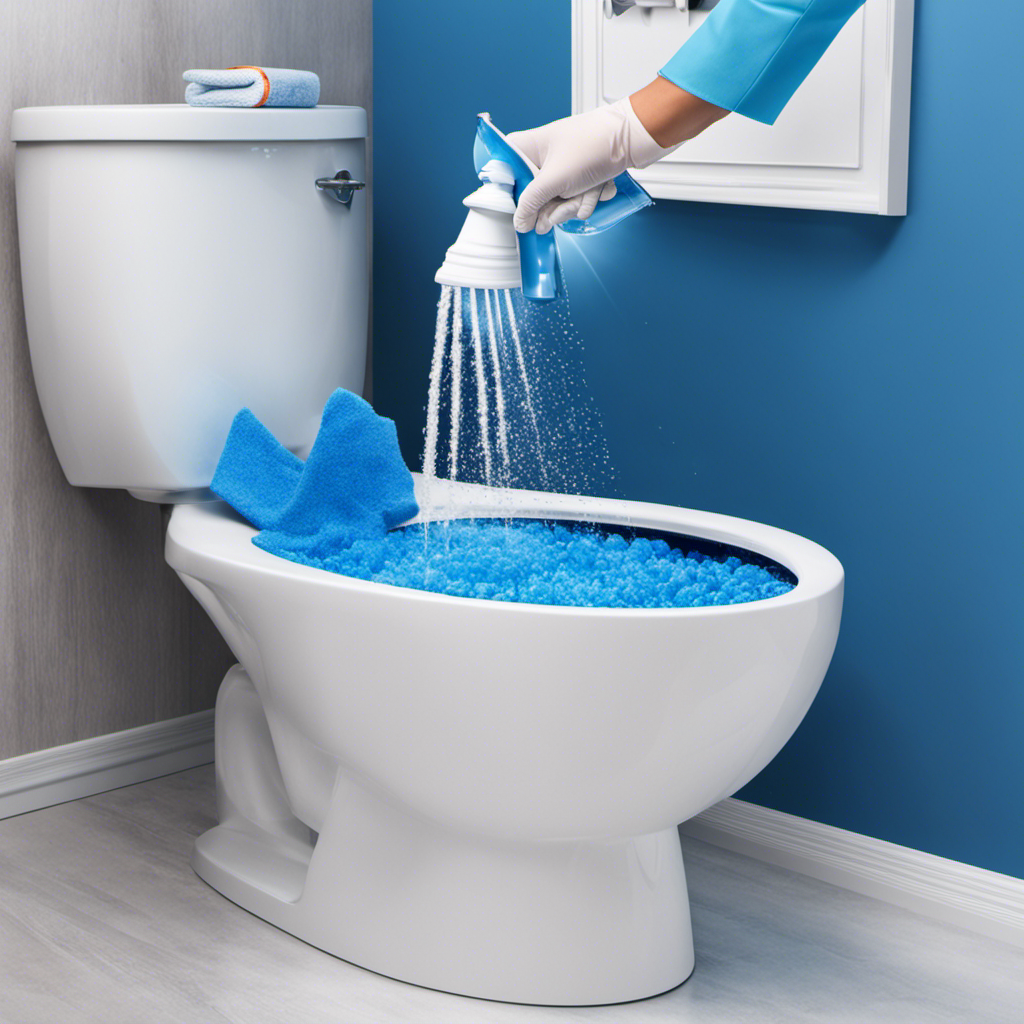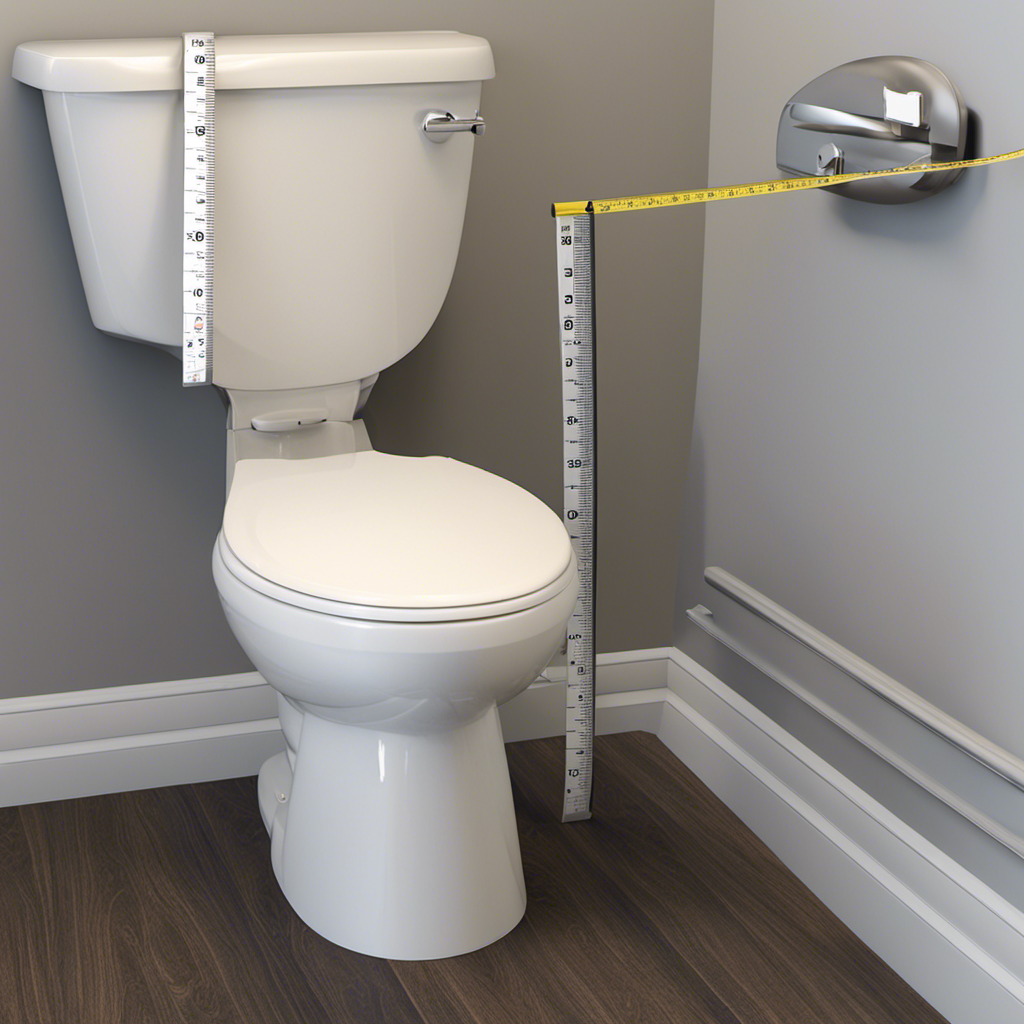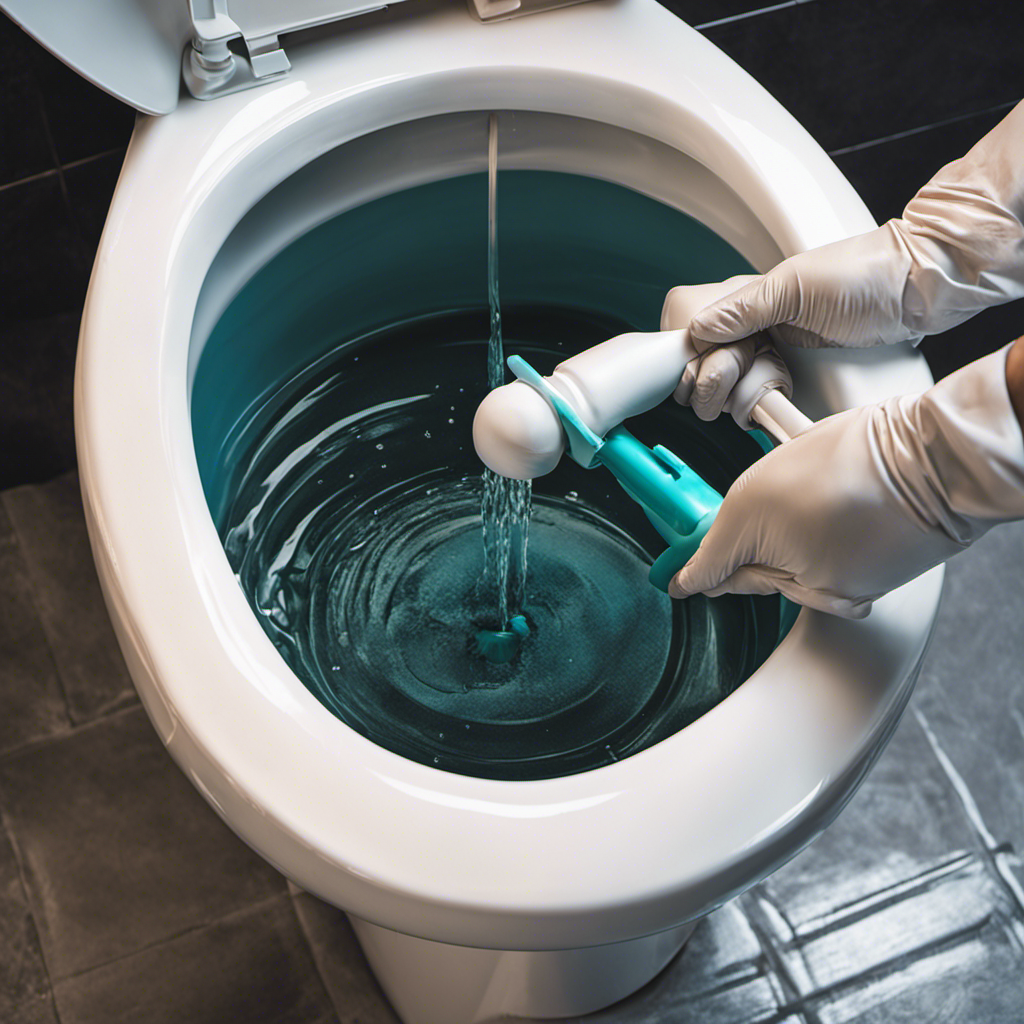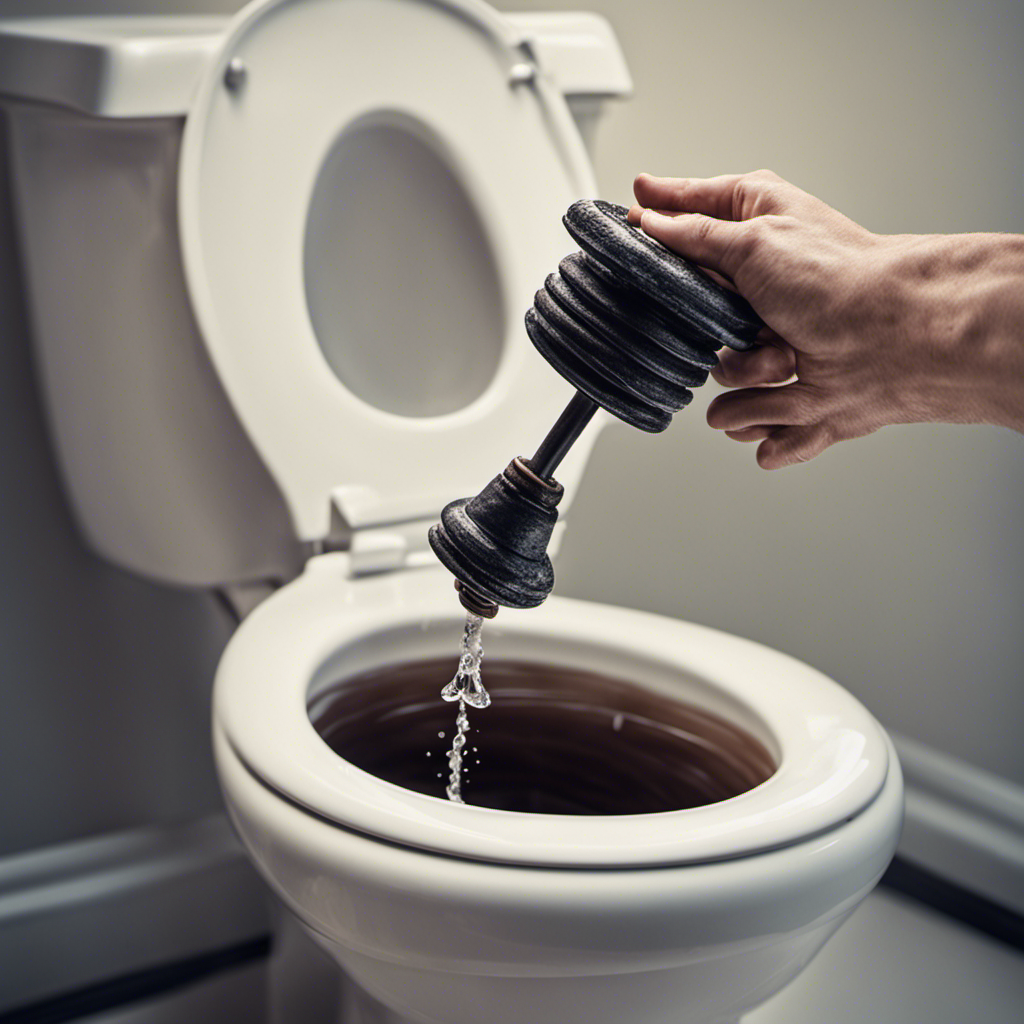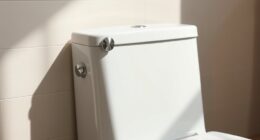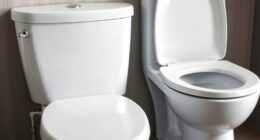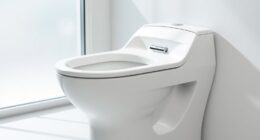As a homeowner, I’ve often found myself puzzled by the mysterious phenomenon of a double flushing toilet. It’s like a mischievous magician, performing an encore when you least expect it. But fear not, for I am here to unravel the secrets behind this perplexing act.
In this article, we will explore the common causes of double flushing, delve into the intricate workings of toilet tank components, and discover effective ways to fix and prevent this enigmatic occurrence.
So, let’s embark on this journey of toilet enlightenment together.
Key Takeaways
- Double flushing is often caused by a faulty or worn-out flapper valve.
- The water level in the tank can affect the flushing power, with low water levels resulting in weak flushes and high water levels causing tank overflow.
- Checking and cleaning or replacing the flapper valve is an important step in fixing a double flushing toilet.
- Insufficient water pressure, clogged or restricted pipes, and faulty flush valves or flappers can also contribute to double flushing.
Common Causes of Double Flushing
One of the most common causes of double flushing is a faulty flapper valve. The flapper valve is a crucial component of the flushing mechanism in a toilet. It is responsible for sealing the flush valve opening and allowing the water to flow into the toilet bowl when the flush lever is pressed.
Over time, the flapper valve can become worn out or misaligned, causing it to not seal properly. This can result in water leaking from the tank into the bowl, leading to a double flush.
To prevent this issue, regular toilet maintenance is important. This includes checking and replacing the flapper valve if necessary. By ensuring that the flushing mechanism is in good working condition, you can prevent double flushing and maintain the efficiency of your toilet.
Now, let’s explore how other toilet tank components affect flushing.
How Toilet Tank Components Affect Flushing
The components in the toilet tank can impact how it flushes. Proper toilet tank maintenance is essential for optimal flushing efficiency.
One crucial factor to consider is the water level in the tank. The water level affects the flushing power and efficiency of the toilet. If the water level is too low, it may result in a weak flush, leading to incomplete waste removal. Conversely, if the water level is too high, it can cause the tank to overflow and waste water.
To ensure the right water level, check the fill valve and adjust it accordingly. Additionally, inspect the flapper valve for any signs of wear or damage, as a faulty flapper valve can also affect flushing performance.
Regularly maintaining these components will help maintain the proper water level and ensure efficient flushing.
Ways to Fix a Double Flushing Toilet
To fix a toilet that flushes twice, start by checking the flapper valve and adjusting the water level in the tank.
The flapper valve is a crucial component of the flushing mechanism that controls the flow of water from the tank into the toilet bowl. If it is not sealing properly, water may continuously leak into the bowl, causing a double flush. Inspect the flapper valve for any signs of damage or debris that may be preventing it from closing tightly. Clean or replace the flapper if necessary.
Additionally, adjusting the water level in the tank can also help prevent double flushing. Lowering the water level can reduce the force of the flush and minimize the likelihood of a double flush.
Understanding the Role of Water Pressure in Double Flushing
Understanding how water pressure affects the flushing mechanism can help you diagnose and resolve the issue of a toilet that flushes twice. Water pressure troubleshooting is an important step in identifying the root cause of this problem.
Here are three key points to consider regarding the impact of water supply on toilet flushing:
-
Insufficient water pressure: Low water pressure can result in an incomplete flush, causing the toilet to double flush. Check the water supply valve and ensure it is fully open to allow maximum water flow.
-
Clogged or restricted pipes: Build-up or blockages in the pipes can decrease water pressure and disrupt the flushing process. Regular maintenance and periodic pipe cleaning can prevent this issue.
-
Faulty flush valve or flapper: A worn-out or improperly functioning flush valve or flapper can lead to inadequate water flow, resulting in a double flush. Inspect these components and replace if necessary.
By understanding these factors, you can troubleshoot water pressure issues and address them effectively.
Now, let’s explore ways to prevent double flushing in the future.
Preventing Double Flushing in the Future
By implementing regular maintenance and cleaning of the pipes, you can prevent future occurrences of double flushing. Proper toilet maintenance is crucial for the efficient functioning of your toilet and water conservation.
One of the main causes of double flushing is a clog or blockage in the pipes. Over time, debris, mineral deposits, and even small objects can accumulate, reducing the water flow and causing the toilet to double flush. To prevent this, it is essential to regularly clean the toilet bowl and the pipes.
Use a toilet brush and a mild cleaner to scrub the bowl, paying attention to the jets and siphon jet holes. Additionally, consider using a toilet auger or a plunger to remove any stubborn clogs.
Conclusion
In conclusion, the issue of double flushing in toilets can be attributed to a few common causes. Problems with the toilet tank components, such as a faulty flapper or fill valve, can lead to incomplete flushes and subsequent double flushing.
Additionally, water pressure plays a crucial role in the flushing process, and low pressure can result in ineffective flushes. However, by understanding these factors and implementing proper fixes, such as replacing faulty components or adjusting water pressure, one can prevent future instances of double flushing.
In the world of toilets, knowledge truly is power, and addressing these issues promptly will ensure a smooth and efficient flushing experience. So, don’t let your toilet play tricks on you – take charge and fix those double flushes!
